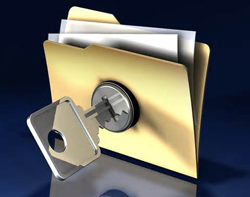
Redundancy #3: Multiple Technologies
There are two ways that you can provide technological redundancy within your backup regimen.
The first is by choosing different storage media for your two different copies.
This redundancy can eliminate the risks introduced by unforeseen factors like defective optical media and infant mortality in hard drives.
Some simple examples of technological redundancy in the primary backup technology could include:
—Copy #1 copied to network attached storage; copy #2 burned to DVD-ROM
—Copy #1 copied by the facility’s AIT library; copy #2 on your removable Firewire drive
This difference doesn’t have to be perfect or dramatic. The key is to avoid high-risk scenarios like two identical drives from the same manufacturer, or multiple DVDs.
The other type of technological redundancy is the secondary technology. This includes any hardware or software necessary to write or read data to/from the primary storage medium.
Common examples include:
—Automated archival applications like Retrospect or PresStor
—Optical media drives
—Tape drives
As a rule of thumb, it’s a good idea to rely on as little intermediate technology as possible when backing up client data. Each additional mechanism can represent a barrier to future retrieval. When secondary technology is needed, make it unique to one copy.
Good Habits Make It Easy
The difficult thing about unexpected crises is the whole ‘unexpected’ part. There’s no way to sit at the end of a session and know whether this is going to be one of the times you’ll end up using a backup to restore client data (and avert a larger crisis). The only option is to get in the habit of a sufficiently redundant, systematic backup routine.
I’ve found that there a number of 5- to 10-minute odd jobs that I can accomplish around the studio while my data copies to secure cloud and local storage. For that matter, having a little email time before barreling on to the next thing can be pretty luxurious as well.
The Limits Of Backups
While backups can save the day during the production cycle, they’re not particularly useful once the project is over and the masters are ready for delivery. Since backups are working safety copies of your production data, they’re still completely reliant on specific versions of production technology, like DAW and plugin applications.
There are detailed, standardized practices for archives which will be discussed in a different article. For reference, check out the Recommendation for Delivery of Recorded Music Projects (pdf) published by the Producers and Engineers Wing of The Recording Academy.
Rob Schlette is chief mastering engineer and owner of Anthem Mastering (anthemmastering.com) in St. Louis, MO, which provides trusted specialized mastering services to music clients across North America.
Be sure to visit the Pro Audio Files for more great recording content. To comment or ask questions about this article go here.
